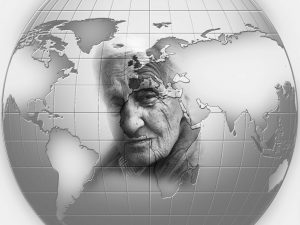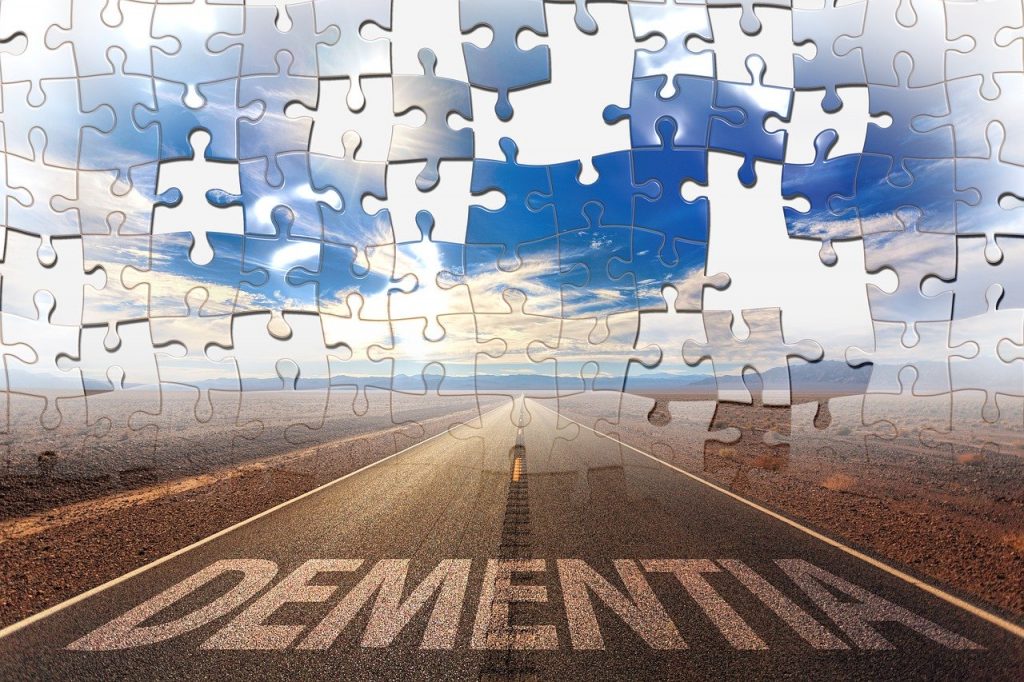This is part 2 of Kathy Lawrence’s series on Dementia and we will review 2 of the 5 different types of Alzheimer’s. View Part 1 Dementia – What is it? here. —EH Stafford, Managing Editor
Alzheimer’s Dementia
 The Alzheimer’s association defines this disease as “a type of dementia that causes problems with memory, thinking and behavior. Symptoms usually develop slowly and get worse over time, becoming severe enough to interfere with daily tasks.”
The Alzheimer’s association defines this disease as “a type of dementia that causes problems with memory, thinking and behavior. Symptoms usually develop slowly and get worse over time, becoming severe enough to interfere with daily tasks.”
Alzheimer’s is the most common dementia accounting for 60-80% of all dementia diagnosis. One myth is that dementia and specifically Alzheimer’s is a normal part of aging. The good news is, it is not. And, you can take an active role in preventing Alzheimer’s dementia which we will discuss further in another article.
The key identifier of Alzheimer’s is that the disease is progressive and progresses slowly over time. Early on, memory loss is the key sign but it’s subtle like misplacing keys, so people usually ignore early warning signs. People can live up to 20 years with this diagnosis due to its slow progression.
The key factor in this disease is that people develop plaques in their brain. Plaques are deposits of a protein fragment called beta-amyloid and these plaques are what cause problems in the brain.

The National Institute on Aging suggest that more than 5.5 million Americans, most of them age 65 or older, may have dementia caused by Alzheimer’s!
Vascular Dementia
The Mayo clinic describes Vascular dementia as “a general term describing problems with reasoning, planning, judgment, memory and other thought processes caused by brain damage from impaired blood flow to your brain.”
Factors that increase the risk for vascular dementia include a history of stroke and heart disease. So additional risk factors are diseases that cause heart disease such as diabetes, hypertension, and high cholesterol. Smoking is also another risk factor that increases your risk of getting vascular dementia.
Vascular dementia is less predictable than Alzheimer’s. Symptoms depend on which part of the brain is lacking blood flow. Another distinguishing symptom is that vascular dementia can progress very fast.
Read tomorrow’s article for the next three types of Dementia.
References:
- https://www.alz.org/alzheimers-dementia/what-is-alzheimers
- https://www.mayoclinic.org/diseases-conditions/vascular-dementia/symptoms-causes/syc-20378793
- https://www.nia.nih.gov/health/what-lewy-body-dementia
- https://www.alz.org/alzheimers-dementia/what-is-dementia/types-of-dementia/mixed-dementia
- https://www.alz.org/alzheimers-dementia/what-is-dementia/types-of-dementia/frontotemporal-dementia
- https://www.nia.nih.gov/health/alzheimers-disease-fact-sheet

Kathy Lawrence has 20 years of experience as a Physical Therapist. Kathy received her Master of Physical Therapy degree in 1999 from the University of Wisconsin – Madison. Then followed up with her Doctorate Degree in Physical Therapy in 2008 from A.T. Still University. She prides herself in her focus on Healthy Aging. Whether it’s wellness, pain management, or helping recover from an injury Kathy has been instrumental in keeping our aging population on their feet.
The views, thoughts and opinions expressed by our writers
belong solely to them and do not represent
LKNConnect.com, its publisher or its staff.



